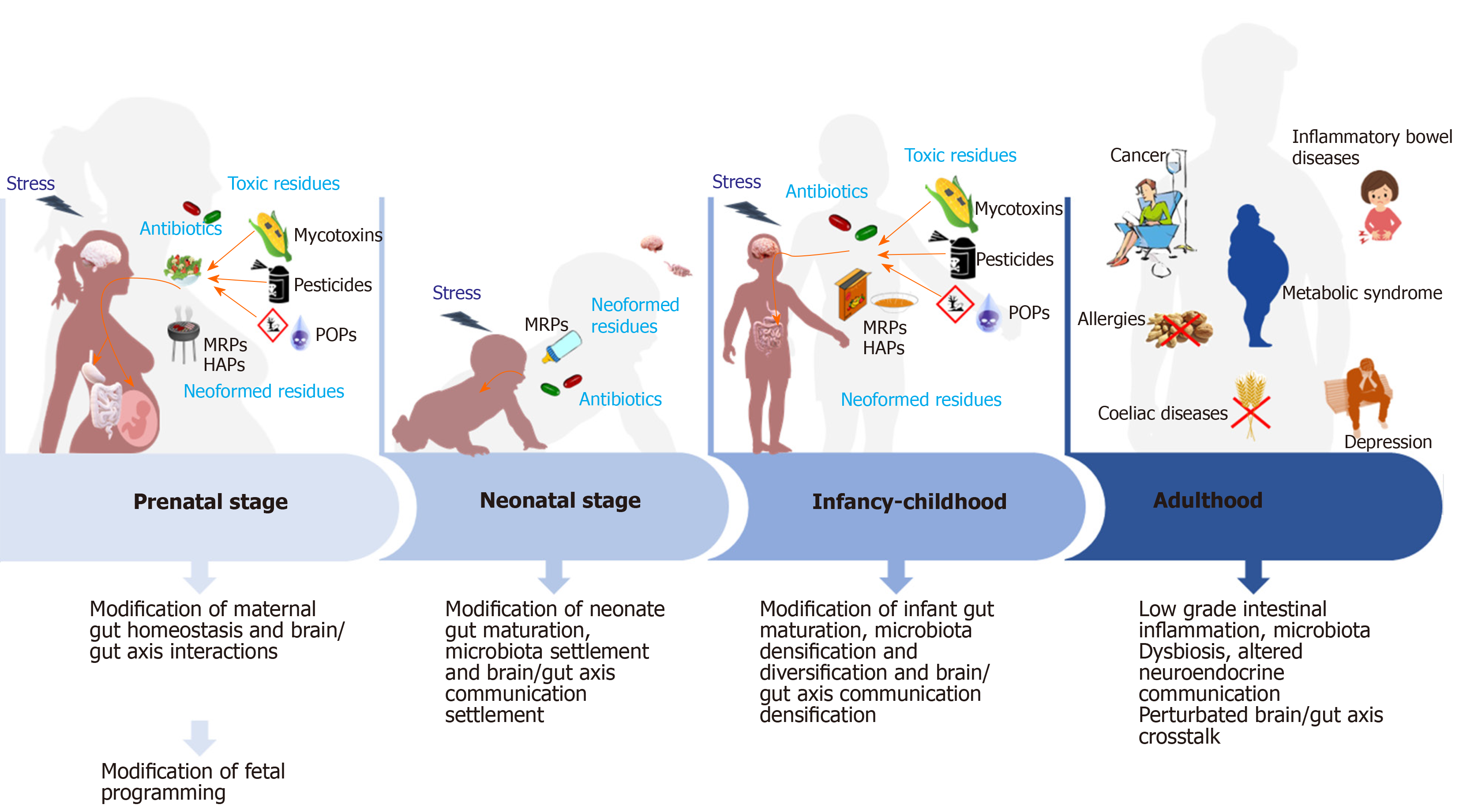Copyright
©The Author(s) 2020.
World J Gastroenterol. Jun 21, 2020; 26(23): 3145-3169
Published online Jun 21, 2020. doi: 10.3748/wjg.v26.i23.3145
Published online Jun 21, 2020. doi: 10.3748/wjg.v26.i23.3145
Figure 1 Hypothesis on the impact of food contaminants on prenatal and postnatal gut homeostasis mis-programming and its consequences on the etiology of non-communicable chronic diseases.
During pregnancy and infancy, repeated exposure of fetus and then infant to food contaminants is presumed to be at the origin of altered gut homeostasis due to mis settlement of neuro-immuno-endocrine cross talks and microbiota diversification and densification. Furthermore, also due to these contaminants, the brain/gut axis exchanges might not settle properly. All these modifications during the perinatal period may, later in life, predispose to the appearance of non-communicable chronic diseases among which celiac disease, allergies, inflammatory bowel disease, metabolic syndrome, depression, etc. At the bottom of the figure, are presented the main consequences on gut homeostasis observed at each stage of life. MRPs: Maillard reaction products; POPs: Persistent organic pollutants.
- Citation: Sarron E, Pérot M, Barbezier N, Delayre-Orthez C, Gay-Quéheillard J, Anton PM. Early exposure to food contaminants reshapes maturation of the human brain-gut-microbiota axis. World J Gastroenterol 2020; 26(23): 3145-3169
- URL: https://www.wjgnet.com/1007-9327/full/v26/i23/3145.htm
- DOI: https://dx.doi.org/10.3748/wjg.v26.i23.3145









